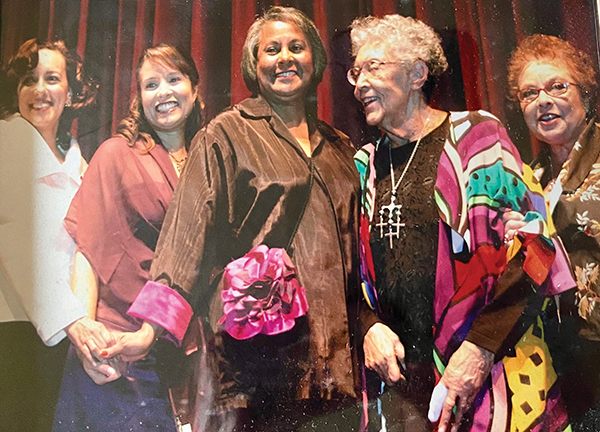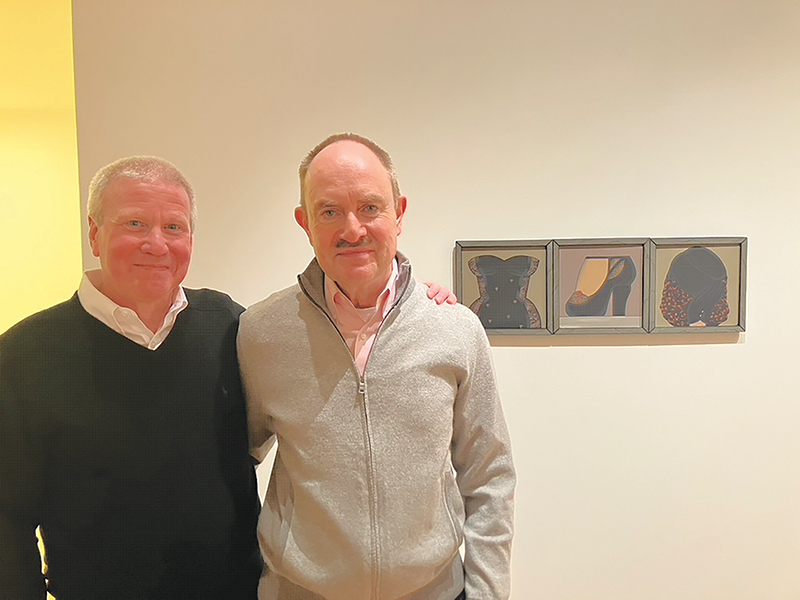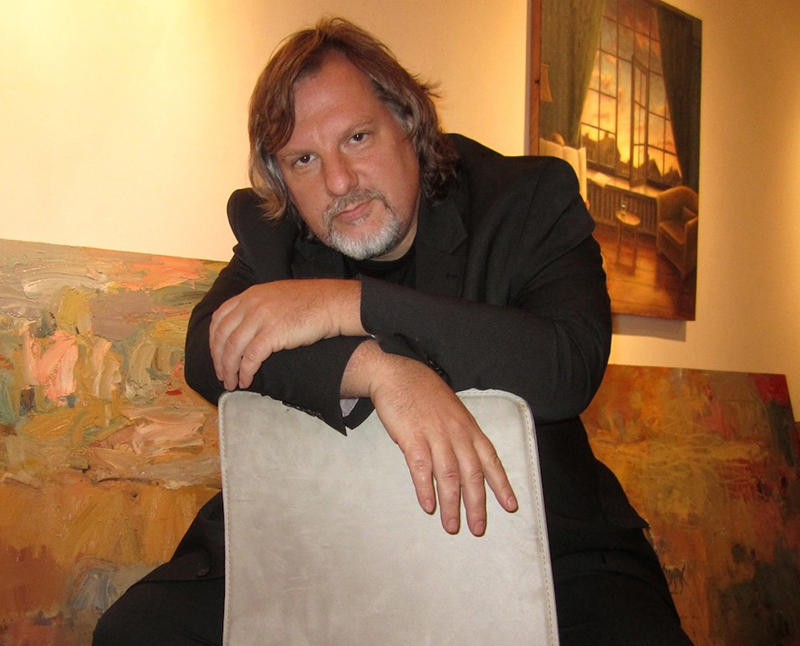Collector Jason Pickleman’s Creative Life

By FRANCK MERCURIO
Lawrence & Clark is an unassuming storefront gallery that functions as a public venue for graphic designer Jason Pickleman’s private art collection. Over the past 30 years, Pickleman has assembled an eclectic collection of more than 1,000 paintings, sculptures, and works on paper by the likes of Sterling Ruby, Michael DeLucia, Jin Lee, Judy Ledgerwood, Tom Friedman, and his current favorite, Puppies Puppies (Drew Olivo). On a recent visit to the gallery, I spoke with Pickleman about his collection and his deep roots in Chicago’s art community.
Pickleman’s approach to collecting:
I buy almost everything at first sight. I see it; it piques my interest; I buy it immediately. Very seldom do I hem, haw, think, research. I do almost no research when it comes to collecting—purely instinctive, always impulsive—much to my wife’s chagrin!
Purchasing a sculpture by Jenny Buffington:
Jenny Buffington had a one-woman show at Heaven Gallery. So I picked up [this sculpture], and I bought it not knowing anything about the artist. Never seen her work before. I was there for a party. [The piece] was available. One glass of whiskey later, I walked home with it! That happens a lot.
Ground up vs. museum down:
I guess my collecting started from the ground up, as opposed to from the museum down. It has been brought on by my relationship with the Chicago cultural community, by being engaged with arts groups, artists, architects, entrepreneurs, and designers – by going to openings and doing studio visits. I go to places like Heaven, LVL3, and the Chicago Artists Coalition.
“Emerging” is a dirty word:
You know, I don’t like the term “emerging.” Actually, I take offense to the word. Because, I mean, everybody’s emerging as something else.
When you go into a more established gallery, a more commercial gallery, there’s a certain pedigree that shapes one’s responses to the work. When I go into a “scruffier” gallery, I find the lack of pedigree to be freeing. I can have a more personally authentic experience with an art object when I don’t know the artist’s name, their reputation, or their exhibition history.
Encountering Rothko at age 10:
I remember a trip to New York when I was maybe nine or ten and seeing Rothkos at MoMA. That lodged in my brain, that level of atmospheric abstraction as a field of interest for an artist. It was mind-blowing for a ten-year-old. [The Rothko] wasn’t a picture of something. It wasn’t a place. It wasn’t recognizable as anything. But at the same time, it was suggestive of a state of thinking, a state of emotion. I kind of sensed all that at a young age: that art could be this thing that was both specific and ambiguous, suggestive and abstract. And I think that my collection and my habits in collecting are absolutely informed by those contradictions.
Art as memory device:
[The works I collect] are mnemonic devices, memory devices for me. They are snapshots of where I was at certain point in my adult life. And my adult life—I’m 51 now—has been 100 percent engaged with the Chicago art community. And I haven’t left Chicago. I’ve been able to find opportunities in Chicago—both personal and professional opportunities—and I’ve watched multiple generations of artists come up. Many of them leave. Many of them disappear. And owning the work of so many has been one way for me to acknowledge their importance in my adult life.
Opening Lawrence & Clark:
I think opening the gallery was one way for me to rationalize buying more work and as a way to treat the work more respectfully. Because I do—passionately—enjoy, love, and respect everything I buy. And often, collectors buy work and then it just disappears into this very private realm, and on one level, that does a disservice to the artist. So by having this gallery space, I open the possibility of not sequestering the work…that’s why I’m here every Saturday, with open hours.

Collecting as part of living a creative life:
[The collection is an] end result of a professional life, lived in Chicago from 1987 to 2016. I mean, as a designer, I’ve produced over 200 books for the most well known artists in the city of Chicago. I’ve befriended artists who ended up having significant careers—Sterling Ruby, Tony Tasset, Judy Ledgerwood, Kerry James Marshall, Iñigo Manglano-Ovalle. These are people I have relationships with. I’ve worked for major museums. I’ve worked with very important curators and museum directors. My entire adult life has been centered around art making, art exhibiting, and art appreciation. Collecting is the end result of those relationships. I did not say, “I’m going to become a collector.” Instead I said, “I’m going to live a creative life in the city of Chicago.” And owning all these rectangles and sculptures and neon, that’s the residue.
Lawrence & Clark, 4755 N. Clark. Open Saturdays 1–5pm and by appointment via text 773-459-0586
Top image: Pickleman in front of one half of Sol LeWitt’s Wall Work No. 391 (1983-2016) at Lawrence & Clark
SaveSave






